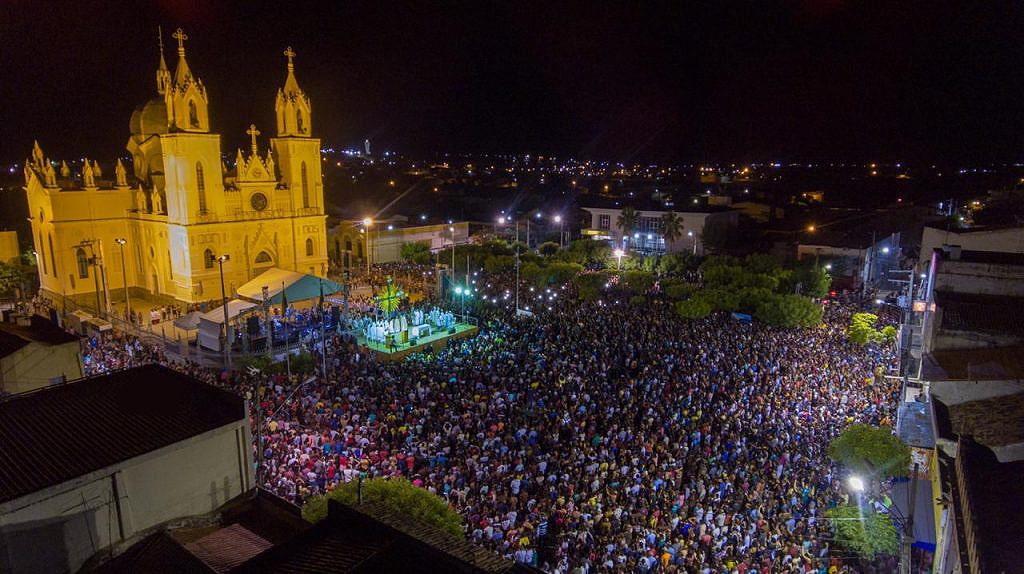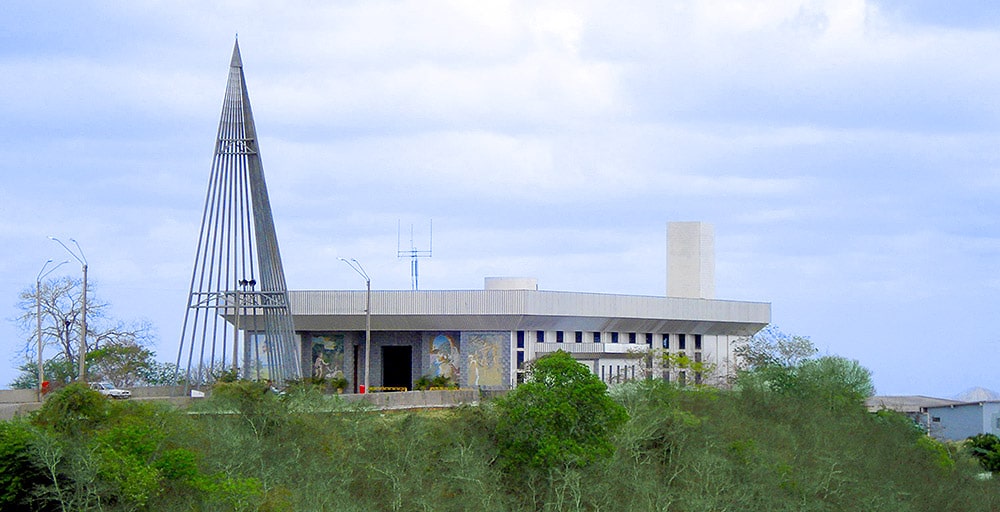Faith plays a large role in the life and culture of the Ceará population. This connects several festivities to specific locations, leading many to pilgrimage to religious destinations in Ceará. Two of the main destinations are Canindé and Juazeiro do Norte. The faithful visit these places to strengthen their faith, thank for miracles and relieve their sufferings. In the state, the majority of the population is Catholic, and for this reason are devotees to saints.
Next up, check out 5 religious destinations to visit in Ceará.

Canindé
Canindé is an important city for religious tourism, because it is one of the main points of pilgrimage in Ceará. The main pilgrimage takes place between September 24 and October 4, days dedicated to San Francisco das Chagas. The pilgrims walk more than 120km under the strong sun until reaching the largest Franciscan sanctuary in the Americas. This is the biggest Franciscan pilgrimage in the world.
One of the main attractions and points of visitation of the place is a monument that is a 30 meter high statue of Saint Francis of Chagas, situated at the entrance of the city. Another important point is the house of miracles, where objects are left that represent a thanks for answered prayers.
Juazeiro do Norte
This is the most important city in the Cariri region. In addition, it is also one of the main religious destinations of Ceará. Juazeiro do Norte was developed around the life of Cicero Romão Batista.
Father Cicero was born in Crato. But, in 1872 at age 28, he moved to Juazeiro do Norte, where he gained fame for making miracles, becoming a great historical figure of the municipality.
The main attractions of Juazeiro do Norte are the hill of Horto (Colina do Horto), the living museum (Museu Vivo) and the sanctuary of San Francisco.

Religious destinations in Ceará – Quixadá
Quixadá is another destination that is sought after by the religiously faithful.
The city houses the famous Santuário Mariano de Nossa Senhora Imaculada Rainha do Sertão, that is located on the top of the Urucum Serra (Urucum hill), and is a main point of visitation of the locality.
The months of February and October are the main periods of visitation of the sanctuary, a season marked by the celebrations in the name of Nossa Senhora as well as the homages given to San Francisco.

Barbalha
Barbalha is where you will find the devotees of St. Antônio, the patron saint of the city. Every year, the faithful go to the city to participate in the festivities of the month of July, a period of homage to the saint of matchmaking.
One of the main traditions of the city is something called “the flag stick party”. This is where many of the devotees go to the Plateau of Araripe to get a tree trunk that has been left in the forest to dry out. Then some days after, the procession happens, where the trunk is carried on the shoulders of the people to the center of the city and raised in front of the Igreja Matriz with a flag of St. Antônio. Single women believe that if they touch the trunk, it will increase their chances of marrying.
Santana do Cariri
In Santana do Cariri, faith and devotion are linked to the story of Benigna Cardoso da Silva. The girl who was an orphan and very connected to religion. She died, in fact, because of unrequited love.
On October 24, 1941, Benigna was unfortunately surprised by Raul Alves, who tried to seduce her. The resistance angered the boy, who was the same age as his soon to be victim. He pulled out a machete and cut Benigna into pieces.
The burial took place the next day and since then many visit the girl’s tomb and see it as a place of martyrdom, it is also the regions well. The main festivities occur between the 15th and 24th of October, the birthday and death of the Benigna respectively.
Celebrations come to an end with the “flower mass”, gathering many pilgrims in the city. About 40,000 people go to the Benigna pilgrimage, among them are Brazilians and Catholics from other parts of the world. The Benigna pilgrimage has been largely motivated by the campaign for her beatification by the Vatican.
Have you enjoyed this article? You could also read: Ceará cuisine: 5 local foods to try!
